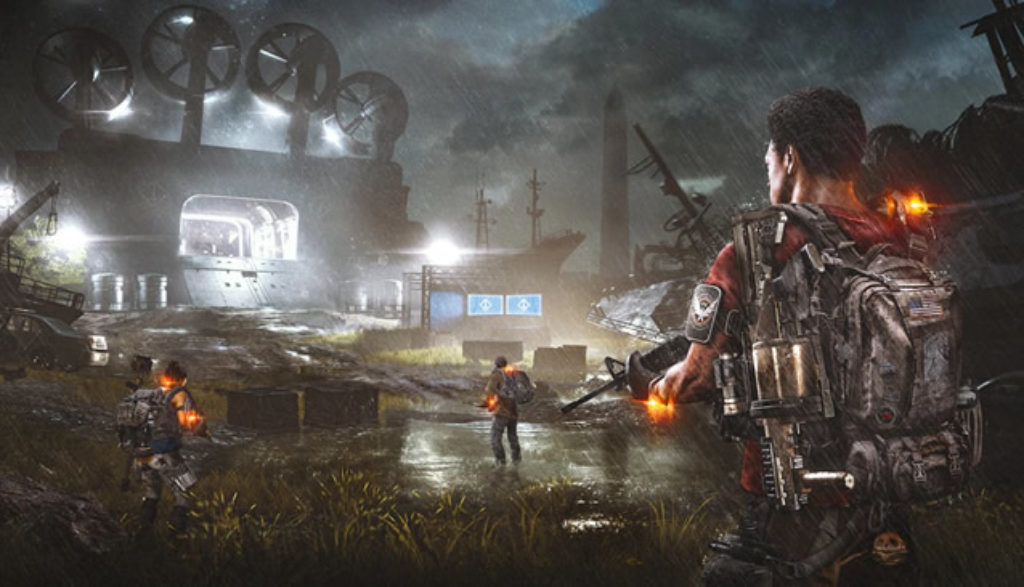
The Division 2 is a great example of a third-person shooter sequel fine-tuning its gameplay and giving its fans more: more of the one-man-army shoot-’em-up stuff that made those fans fans in the first place. More running around and picking up bits of valuable loot. And a more detailed open world for them to do their running, looting and shooting in.
This sequel’s approach is that simple, really. And from that perspective, it does its job.
But there’s, uh, more to consider.
As with the franchise’s first entry, this game’s world is still reeling from a “Green Poison” biological attack that spread a potent strain of smallpox around the globe and killed off a huge chunk of the Earth’s population. You play as an agent of The Division—a group of skilled soldiers embedded in large cities by the U.S. Government—who has been called up to aid the huddled masses left at the mercy of hunger, disease and snarling bands of baddies in the streets.
It’s seven months after that cataclysmic poisonous assault. And while doing your vital job, you realize that the SHD network—a web-like grid that connects you to the efforts of other brave battlers, and which controls the special advanced tech you use—has suddenly gone dead. In its place is a distress beacon from Washington, D.C.
Who else but you should head out to the now humbled government hub and set things right? After you arrive, you find that no fewer than three factions of evildoers—the Hyenas, the Outcasts and the True Sons—are trying to impose their heavily armed will upon the terrified citizenry. It’s up to you to liberate Washington, recapture city control points, restore the SHD network and help out civilian settlements along the way.
Gameplay-wise, the story campaign offers a well-designed series of missions in and around detailed locations and landmarks. Alone or in co-op with other online players, you take on missions to places such as Roosevelt Island, the Air & Space Museum’s Mars exhibit, the top of the Capital Building, the lobby of the Grand Washington Hotel, etc.
Each recognizable locale offers a special feel all its own, and each faction of gang members or paramilitary warlords you encounter comes packing its own style of combat when it comes to their flanking, regrouping, charging and taking cover actions. It all makes your decisions feel more realistic and increases the challenge in figuring out your own tactics and how to best proceed.
The game’s non-player characters seem much more realistic this go ’round, too. Rather than just being mindless battle fodder, they feel more like people making choices and moving on those determinations. For instance, you might come upon a street battle already in progress that you can jump into and influence. Or while clearing a given control point, you can send up a flare, and NPC good guys in the area will come running to your aid.
That’s the sort of “more” I referred to above. It’s not radically more immersive, but it certainly makes this gaming world feel more authentic.
All of that said, those additions can make things feel more brutal at times, too.
You’ll find and wield nearly every type of assault rifle, machine gun and explosive agent you can imagine. So in battle, people fall, scream writhe and die; and of course, the blood spray and destruction of firefights are both predictable.
But you might not be expecting to run upon groups of citizens being ruthlessly executed as you move toward your next mission, or to hear an innocent being tortured with a hammer in order to lure you away from your current cover. Those examples of “more” are pretty disturbing.
There’s also the unnerving central idea of the game itself to consider, if you pause for a moment of thought. Yes, you’re trying to save and to better the lives of people around you. But you are, in essence, an American agent killing fellow Americans on American soil because of someone else’s terrorist choice. In truth, every aspect of Division 2 revolves around someone’s death. This shooter boils human nature down to its basest deadly form, hands out guns, and lets you be a bloody judge and jury.
Top all of that off with constant conversation packed to the brim with f- and s-words, and you can feel awash in Division’ 2′s troubling and ugly reality.
And that’s the dark side of a more realistic more.

After spending more than two decades touring, directing, writing and producing for Christian theater and radio (most recently for Adventures in Odyssey, which he still contributes to), Bob joined the Plugged In staff to help us focus more heavily on video games. He is also one of our primary movie reviewers.